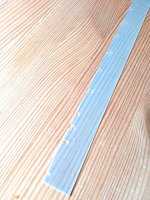For those interested in low weight motors for Ebikes, I've used a drone motor (P60) and a (mostl likely) innovative gear reduction using :
- a large ring gear (module2) attached to the rim
- an intermediate external/internal freewheeling gear
- a spur gear gear module 1 connected to the motor axis
The intermediate gear is used to convert gear modules and allow for a larger gear ratio..
The motor/gear can be engaged or not using a simple cable arrangement - so this motor can feature regen too.
Gears were cnc cut in FR4 material (expoxy/glassfiber) using small end mills (1mm/1.5mm diameter).
Functional but noisy at speeds !
https://mv.omegawatt.fr/velo/ebike_ring1.mp4 or on vimeo
https://mv.omegawatt.fr/velo/ebike_ring2.mp4 (similar but with engagement cable view)
- a large ring gear (module2) attached to the rim
- an intermediate external/internal freewheeling gear
- a spur gear gear module 1 connected to the motor axis
The intermediate gear is used to convert gear modules and allow for a larger gear ratio..
The motor/gear can be engaged or not using a simple cable arrangement - so this motor can feature regen too.
Gears were cnc cut in FR4 material (expoxy/glassfiber) using small end mills (1mm/1.5mm diameter).
Functional but noisy at speeds !
https://mv.omegawatt.fr/velo/ebike_ring1.mp4 or on vimeo






